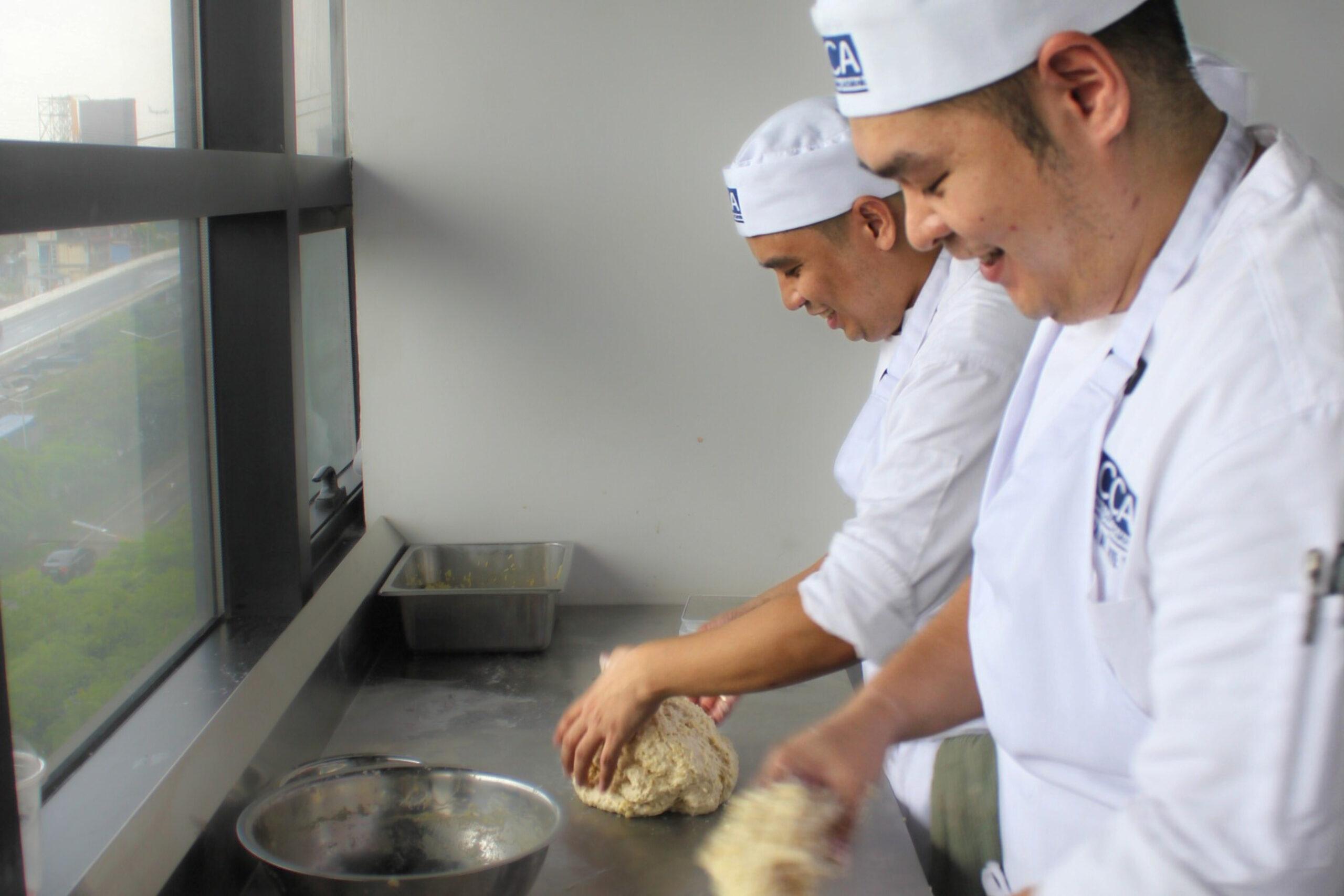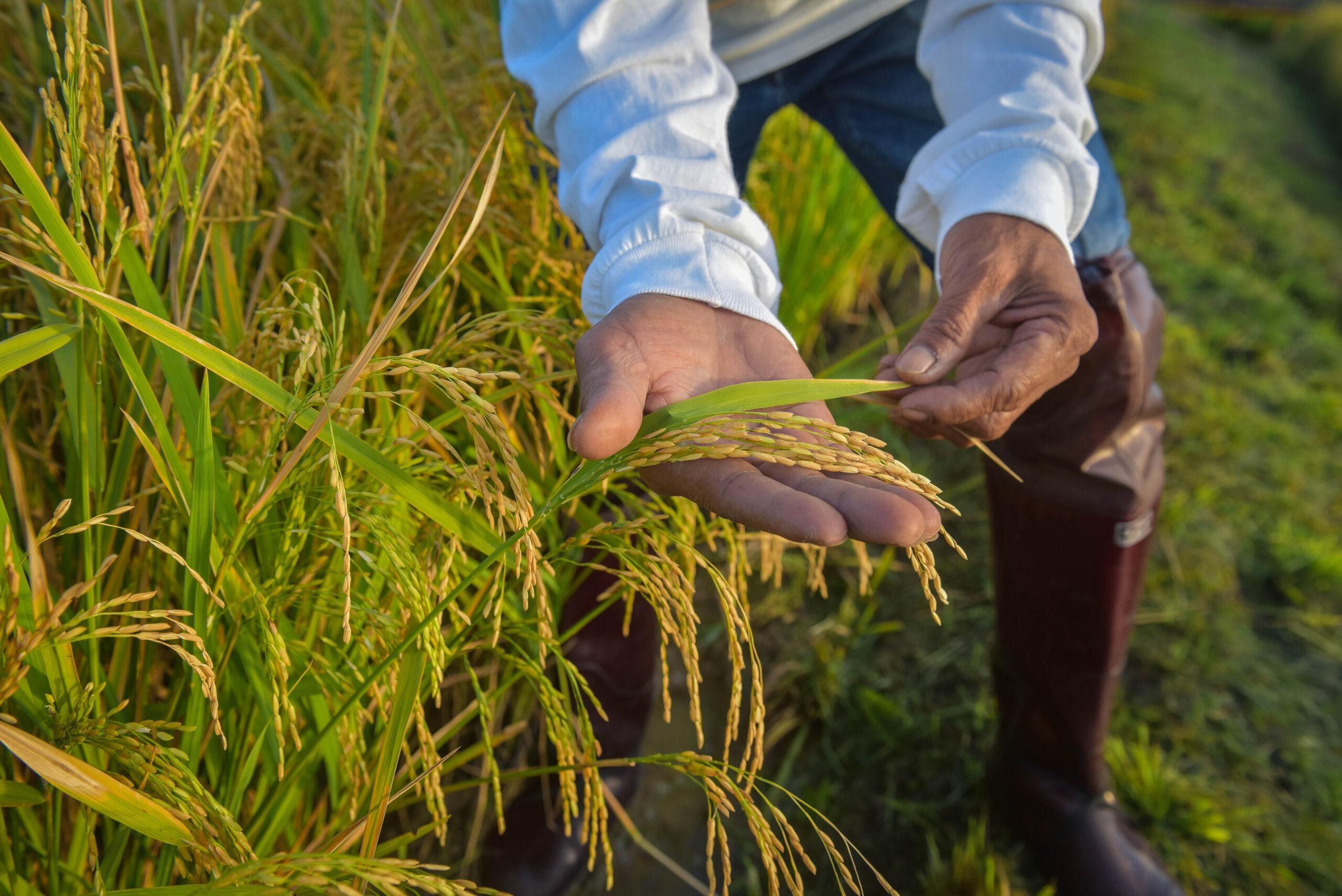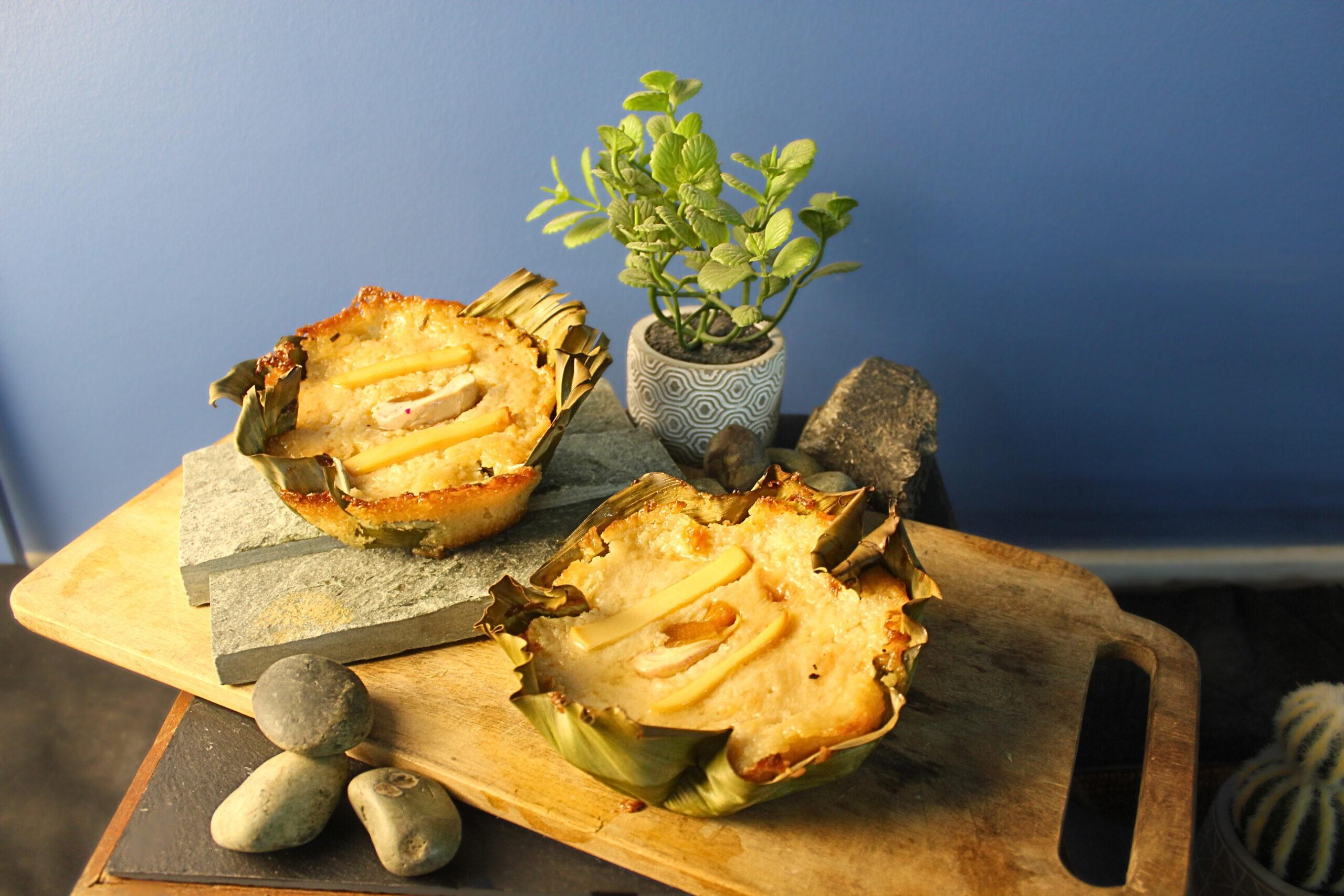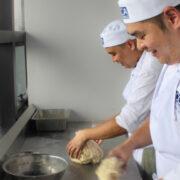
The country’s top culinary school, CCA Manila, in collaboration with the Department of Agriculture-Philippine Rice Research Institute (DA-PhilRice) and the International Rice Research Institute (IRRI), is proud to announce a partnership to develop a range of recipes using Malusog Rice as the main ingredient. This collaboration aims to celebrate Nutrition Month and promote the nutritional benefits of Malusog Rice, a groundbreaking variety of rice developed to help address vitamin A deficiency (VAD) in the country.
 Rice, the very heartbeat of Filipino cuisine, constitutes almost 40% of our diet. But as much as we adore this staple, it falls short in providing essential micronutrients, like vitamin A. Improving the nutritional content of rice could have a significant impact on the nutritional intake of rice-consuming countries like the Philippines, where dietary inadequacy remains high among all socioeconomic classes, compromising the health and potential of our children and families.
Rice, the very heartbeat of Filipino cuisine, constitutes almost 40% of our diet. But as much as we adore this staple, it falls short in providing essential micronutrients, like vitamin A. Improving the nutritional content of rice could have a significant impact on the nutritional intake of rice-consuming countries like the Philippines, where dietary inadequacy remains high among all socioeconomic classes, compromising the health and potential of our children and families.

Malusog Rice, also known as Golden Rice, was developed by Prof. Ingo Potrykus and Prof. Peter Beyer, with the technology being donated to developing countries like the Philippines. The Malusog Rice Program of DA-PhilRice, is leading the development, production, and deployment of Malusog Rice in the Philippines, in collaboration with IRRI and other government and non-government agencies.
Malusog Rice has undergone rigorous biosafety assessments from reputable organizations such as Health Canada, Food Standards Australia New Zealand, the Food and Drug Administration of the United States of America, and DA-Bureau of Plant Industry. It has been determined to be as safe, with the added benefit of beta-carotene in the grain, which the body converts to vitamin A.
Malusog Rice offers significant benefits to the Filipino population. It can help improve the diets of children, who are often deficient in vitamin A, by providing 30-50% of the Estimated Average Requirement (EAR) for vitamin A. In fact, one cup of cooked Malusog Rice can provide as much beta-carotene as 4 cups of cooked kangkong (water spinach), a commonly consumed vegetable.
 Moreover, Malusog Rice is not significantly different from commonly available rice varieties in taste and cost. Initial taste tests have shown that participants could not distinguish between Malusog Rice and regular rice. Ongoing consumer sensory evaluation in the pilot provinces confirms that the taste of Malusog Rice is comparable to that of regular rice.
Moreover, Malusog Rice is not significantly different from commonly available rice varieties in taste and cost. Initial taste tests have shown that participants could not distinguish between Malusog Rice and regular rice. Ongoing consumer sensory evaluation in the pilot provinces confirms that the taste of Malusog Rice is comparable to that of regular rice.
The partnership between CCA Manila and the Malusog Rice Program aims to develop recipes that highlight the versatility of Malusog Rice by utilizing various indigenous ingredients, cooking methods, and heirloom techniques from the Philippines. These recipes, accompanied by comprehensive nutritional value calculations, will be designed to feed a typical Filipino family of six at an affordable cost of P300.
To maximize the impact of the Malusog Rice Recipes, various formats such as recipe cards, cookbooks, and posters will be utilized for dissemination. A soft launch of the recipes is planned to coincide with the national celebration of Nutrition Month this July. This initiative emphasizes the potential of Malusog Rice to improve the nutrition of vulnerable population groups and underscores its importance in complementing existing nutrition interventions.
“We are excited to partner with the Malusog Rice Program to develop Malusog Rice Recipes that not only showcase the versatility of this remarkable rice variety but also contribute to addressing the pressing issue of vitamin A deficiency in our country,” said Dr. Ma. Veritas Luna, Chancellor for Education of CCA Manila. “Through this collaboration, we aim to inspire mothers, cooks, chefs, and consumers, in general, to explore the vast culinary possibilities of Malusog Rice and enhance the overall nutrition of our nation.”
This partnership between CCA Manila and the Malusog Rice Program signifies a significant step forward in the ongoing efforts to combat vitamin A deficiency in the Philippines. By combining culinary expertise with scientific innovation, the recipes will revolutionize the way Filipinos perceive and consume rice in their daily lives.
For inquiries on CCA Manila’s programs, visit its website at http://www.cca-manila.edu.ph. Email talktous@cca-manila.edu.ph or visit @ccamanila on Facebook and Instagram.
RECIPES
MALUSOG RICE BREAD
YIELD: 6 MINI LOAVES
INGREDIENTS:
Bread Flour 390g
All Purpose Flour 360g
Instant Yeast 16g
Salt 18g
Water 240ml
Milk, Fresh 240ml
Sugar, White 100g
Butter, Unsalted, Cubed 60g
Malusog Rice, HUSK or GRAIN Cooked 3 cups (630g)
OVEN PROCEDURE:
- In a large bowl, combine bread flour, all-purpose flour, yeast and salt.
- In a bowl, heat combine water, milk, and sugar. Mix well.
- Add liquid to dry ingredients; knead until formed. Add butter and continue kneading for 10 minutes.
- Turn onto a lightly floured surface; knead until smooth and elastic, about 6-8 minutes.
- Add in malusog rice. Continue kneading to form a stiff dough.
- Place dough in a bowl coated with oil, turning once to coat top.
- Cover and let rise in a warm place until doubled, about 30-40 minutes.
- Punch dough down. Turn onto a lightly floured surface; divide into 6. Shape into loaves. Place in 23.5cm x 9cm loaf pans coated with cooking spray. Cover and let rise until doubled, about 30 minutes.
- Bake at 375° for 40-45 minutes or until golden brown. Remove from pans to wire racks to cool completely.
STOVETOP PROCEDURE:
- In a large bowl, combine bread flour, all-purpose flour, yeast and salt.
- In a bowl, heat combine water, milk, and s. Add butter and continue kneading for 10 minutes.
- Turn onto a lightly floured surface; knead until smooth and elastic, about 6-8 minutes.
- Add in malusog rice. Continue kneading to form a stiff dough.
- Place dough in a bowl coated with oil, turning once to coat top.
- Cover and let rise in a warm place until doubled, about 30-40 minutes.
- Punch dough down. Turn onto a lightly floured surface; divide into 6. Shape into loaves. Place in 23.5cm x 9cm loaf pans coated with cooking spray. Cover and let rise until doubled, about 30 minutes.
- On a heavy bottom pot lined with wire rack, place loaf pan on top. Cover the pot.
- Cook in low to medium heat for 35-40 minutes

MALUSOG RICE BIBINGKA
INGREDIENTS:
Malusog Rice Flour 160g (1 cup)
Baking Powder 12g (2 ½ tsp)
Salt 5g (1 tsp)
Eggs, Whole 150g (3 pcs)
Sugar, White 100g (1/2 cup)
Coconut Milk 360ml (1.5 cup)
Evaporated Milk 120ml (1/2 cup)
Margarine, Melted 30g (3tbsp)
Grated Cheese, Cheddar 58g (1/2 cup)
Salted Egg, Sliced 1 piece
Coconut, Grated 25g (1/4 cup)
Banana Leaves as needed
OVEN PROCEDURE:
- Preheat oven to 375 degrees Fahrenheit.
- Combine rice flour, baking powder, and salt then mix well. Set aside.
3.Cream butter then gradually put-in sugar while whisking.
- Add the eggs then whisk until every ingredient is well incorporated.
- Gradually add the rice flour, salt, and baking powder mixture then continue mixing.
- Pour-in coconut milk and fresh milk then whisk some more for 1 to 2 minutes.
- Arrange the pre-cut banana leaf on a cake pan or baking pan.
- Pour the mixture on the pan.
- Bake for 15 minutes.
- Remove from the oven then top with sliced salted egg and grated cheese (do not turn the oven off).
- Put back in the oven and bake for 15 to 20 minutes or until the color of the top turn medium brown.
- Remove from the oven and let cool.
- Brush with butter and top with grated coconut.
STOVETOP PROCEDURE
- In a large bowl, combine malusog rice flour, baking powder, and salt then mix well. Set aside.
- On a separate bowl, combine eggs, sugar, coconut milk, evaporated milk and margarine. Whisk until well combined.
- Gradually fold the malusog rice mixture into the egg mixture.
- Add the grated cheese and stir into the bibingka mixture.
- Lay large round banana leaves on a pan (depending on the size of the pan). Gently pour the bibingka batter onto the lined pan. Cover the pan and let it cook for 30 to 40 minutes using low heat.
- Before bibingka is completely cooked, add sliced salted eggs on top.
- Cover and completely cook the bibingka.
- To check the doneness of the bibingka, insert a toothpick in the center. If the toothpick comes out clean, the bibingka is fully cooked.
- Brush the top with margarine and top with grated coconut.
- Transfer on a plate.
ADOBONG PULA RILLETTE (CAVITE)
Yield: 20pcs (120ml jars)
INGREDIENTS:
Annatto Powder 100g
Vinegar, White 500ml
Fish Sauce 120ml
Salt 20g
Black Peppercorn, Crushed 20g
Sugar, White 120g
Pork, Shoulder 2kg
Pork Belly 1.5kg
Vegetable Oil 500g
PROCEDURE:
- Combine annatto powder, vinegar, fish sauce, salt, peppercorns and sugar in a bowl. Mix well.
- Marinate pork in the mixture for 24 hours.
- Transfer pork in a hotel pan. Pour in oil. Cover the pan with aluminum foil.
- Bake at 150F until fork tender.
- Shred pork, reserve the oil.
- Transfer in containers.






